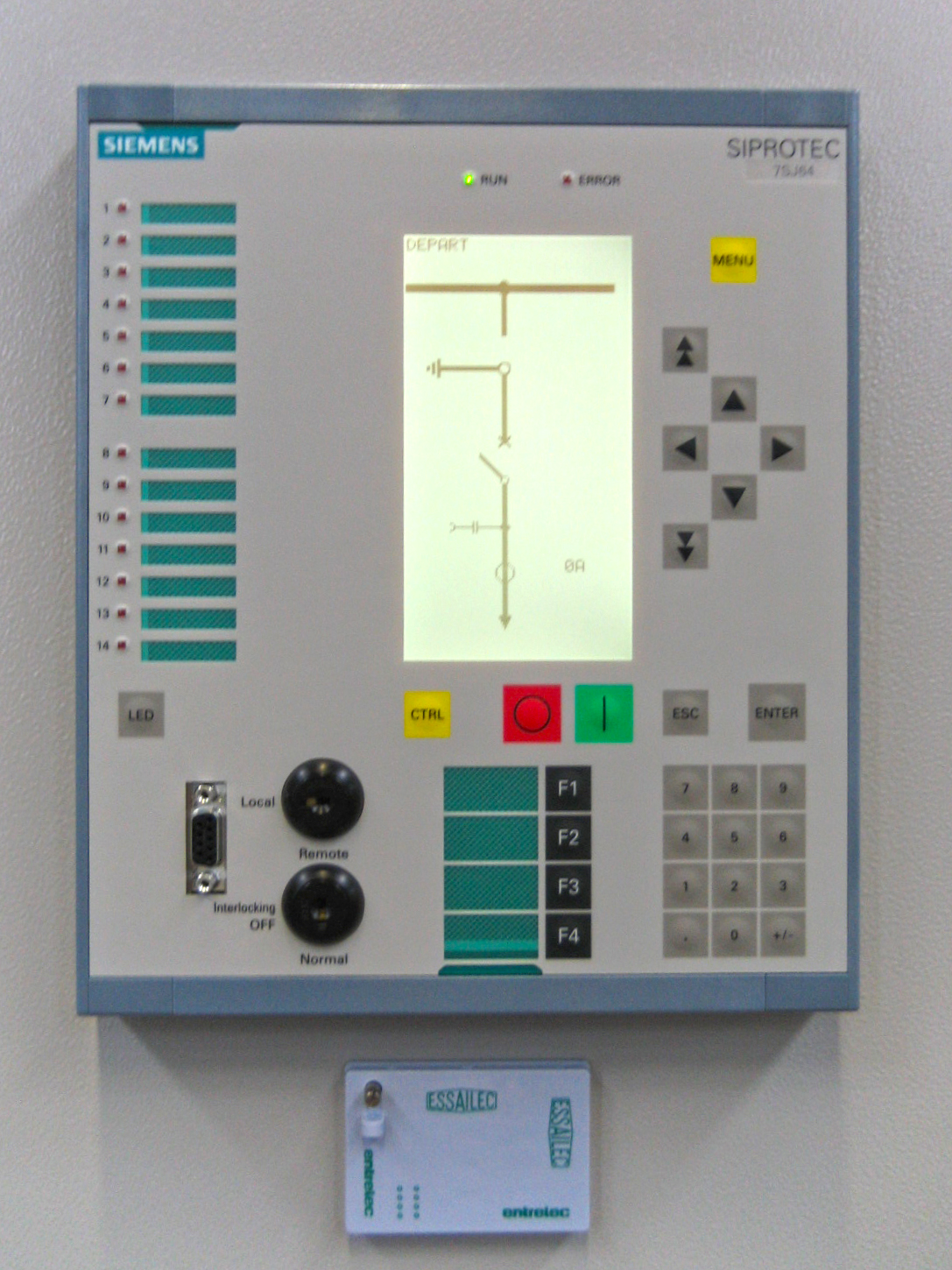Intelligent Electronic Device on:
[Wikipedia]
[Google]
[Amazon]
 In the
In the
 In the
In the electric power industry
The electric power industry covers the electricity generation, generation, electric power transmission, transmission, electric power distribution, distribution and electricity retailing, sale of electric power to the general public and industry. ...
, an intelligent electronic device (IED) is an integrated microprocessor
A microprocessor is a computer processor where the data processing logic and control is included on a single integrated circuit, or a small number of integrated circuits. The microprocessor contains the arithmetic, logic, and control circu ...
-based controller of power system equipment, such as circuit breaker
A circuit breaker is an electrical safety device designed to protect an electrical circuit from damage caused by an overcurrent or short circuit. Its basic function is to interrupt current flow to protect equipment and to prevent the risk ...
s, transformer
A transformer is a passive component that transfers electrical energy from one electrical circuit to another circuit, or multiple circuits. A varying current in any coil of the transformer produces a varying magnetic flux in the transformer' ...
s and capacitor
A capacitor is a device that stores electrical energy in an electric field by virtue of accumulating electric charges on two close surfaces insulated from each other. It is a passive electronic component with two terminals.
The effect of a ...
banks.
Description
IEDs receive data fromsensors
A sensor is a device that produces an output signal for the purpose of sensing a physical phenomenon.
In the broadest definition, a sensor is a device, module, machine, or subsystem that detects events or changes in its environment and sends ...
and power equipment and can issue control commands, such as tripping circuit breakers if they sense voltage
Voltage, also known as electric pressure, electric tension, or (electric) potential difference, is the difference in electric potential between two points. In a static electric field, it corresponds to the work needed per unit of charge t ...
, current, or frequency
Frequency is the number of occurrences of a repeating event per unit of time. It is also occasionally referred to as ''temporal frequency'' for clarity, and is distinct from '' angular frequency''. Frequency is measured in hertz (Hz) which is ...
anomalies, or raise/lower tap positions in order to maintain the desired voltage level. Common types of IEDs include protective relaying devices, tap changer
A tap changer is a mechanism in transformers which allows for variable turn ratios to be selected in distinct steps. This is done by connecting to a number of access points known as taps along either the primary or secondary winding.
Tap changers ...
controllers, circuit breaker controllers, capacitor bank switches, recloser controllers, voltage regulators etc. This is generally controlled by a setting file. The testing of setting files is typically one of the most time-consuming roles of a protection tester.
Digital protective relay
In utility and industrial electric power transmission and distribution systems, a numerical relay is a computer-based system with software-based protection algorithms for the detection of electrical faults. Such relays are also termed as micropr ...
s are primarily IEDs, using a microprocessor to perform several protective, control and similar functions. A typical IED can contain around 5–12 protection functions, 5–8 control functions controlling separate devices, an autoreclose function, self monitoring function, communication functions etc.
Some recent IEDs are designed to support the IEC61850
IEC 61850 is an international standard defining communication protocols for intelligent electronic devices at electrical substations. It is a part of the International Electrotechnical Commission's (IEC) Technical Committee 57 reference archit ...
standard for substation automation, which provides interoperability and advanced communications capabilities.
IEDs are used as a more modern alternative to, or a complement of, setup with traditional remote terminal unit
A remote terminal unit(RTU) is a microprocessor-controlled electronic device that interfaces objects in the physical world to a distributed control system or SCADA (supervisory control and data acquisition) system by transmitting telemetry data t ...
s (RTUs). Unlike the RTUs, IEDs are integrated with the devices they control and offer a standardized set of measuring and control points that is easier to configure and require less wiring. Most IEDs have a communication port and built-in support for standard communication protocols ( DNP3, IEC104 or IEC61850), so they can communicate directly with the SCADA
Supervisory control and data acquisition (SCADA) is a control system architecture comprising computers, networked data communications and graphical user interfaces for high-level supervision of machines and processes. It also covers sensors an ...
system or a substation programmable logic controller. Alternatively, they can be connected to a substation RTU that acts as a gateway towards the SCADA server.
See also
* Power system automationReferences
{{DEFAULTSORT:Intelligent Electronic Device Electric power